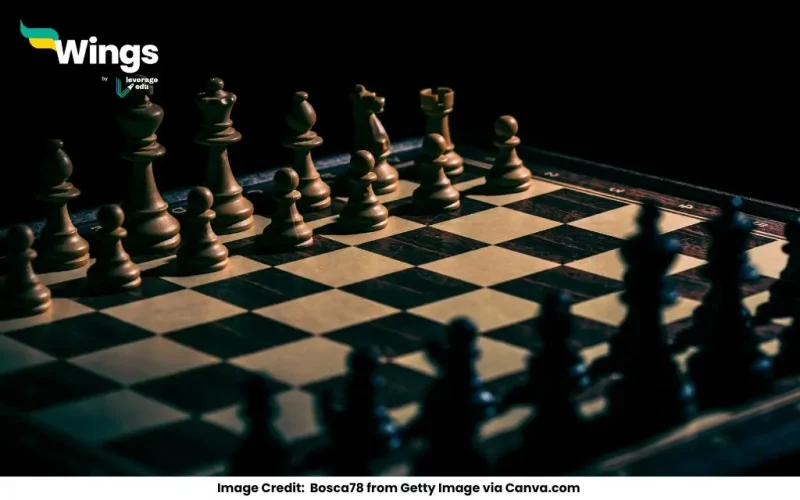Answer: A standard chessboard consists of 64 small squares (8 × 8 grid), but when counting all possible squares of different sizes, the total number is 204. So, the correct answer is option B. 204.
Complete Answer:
A chessboard is an 8 × 8 grid, but apart from individual squares, larger squares can also be formed. To determine the total number, we count squares of different sizes systematically:
1 × 1 Squares (Smallest Squares)
Each square on the board itself is a 1 × 1 square.
- There are 8 rows and 8 columns, forming 8 × 8 = 64 squares.
2 × 2 Squares
Each 2 × 2 square is formed by selecting two adjacent rows and two adjacent columns.
- Since there are 7 possible positions for a 2 × 2 square in each row and column, the total is 7 × 7 = 49 squares.
3 × 3 Squares
Each 3 × 3 square is formed by selecting three adjacent rows and three adjacent columns.
- The total is 6 × 6 = 36 squares.
4 × 4 Squares
Each 4 × 4 square is formed similarly, with:
- 5 × 5 = 25 squares.
5 × 5 Squares
- 4 × 4 = 16 squares.
6 × 6 Squares
- 3 × 3 = 9 squares.
7 × 7 Squares
- 2 × 2 = 4 squares.
8 × 8 Squares (Largest Square)
- 1 × 1 = 1 square (the entire chessboard itself).
Adding All Squares Together:
64+49+36+25+16+9+4+1=204
Thus, the total number of squares in a chessboard is 204.
History of the Chessboard
The chessboard dates back to ancient India during the time of the game Chaturanga (6th century AD), which later evolved into chess. The design of an 8 × 8 grid was standardized in medieval times.
The concept of counting squares is widely used in mathematical combinatorics and has applications in computer algorithms, puzzle-solving, and game theory.
Next time you look at a chessboard, remember that it holds much more than just 64 squares—it’s a fascinating example of geometric patterns!
Common Doubts in Maths
 45,000+ students trusted us with their dreams. Take the first step today!
45,000+ students trusted us with their dreams. Take the first step today!


 One app for all your study abroad needs
One app for all your study abroad needs










